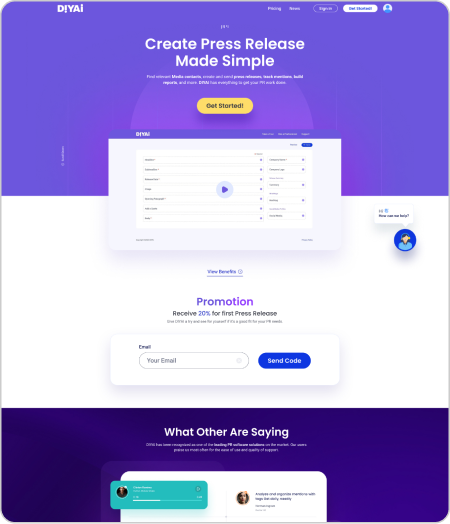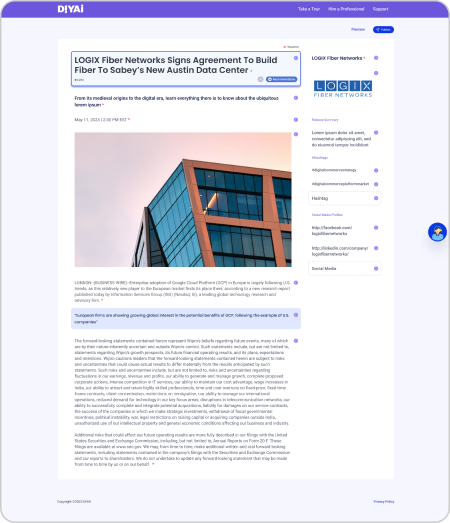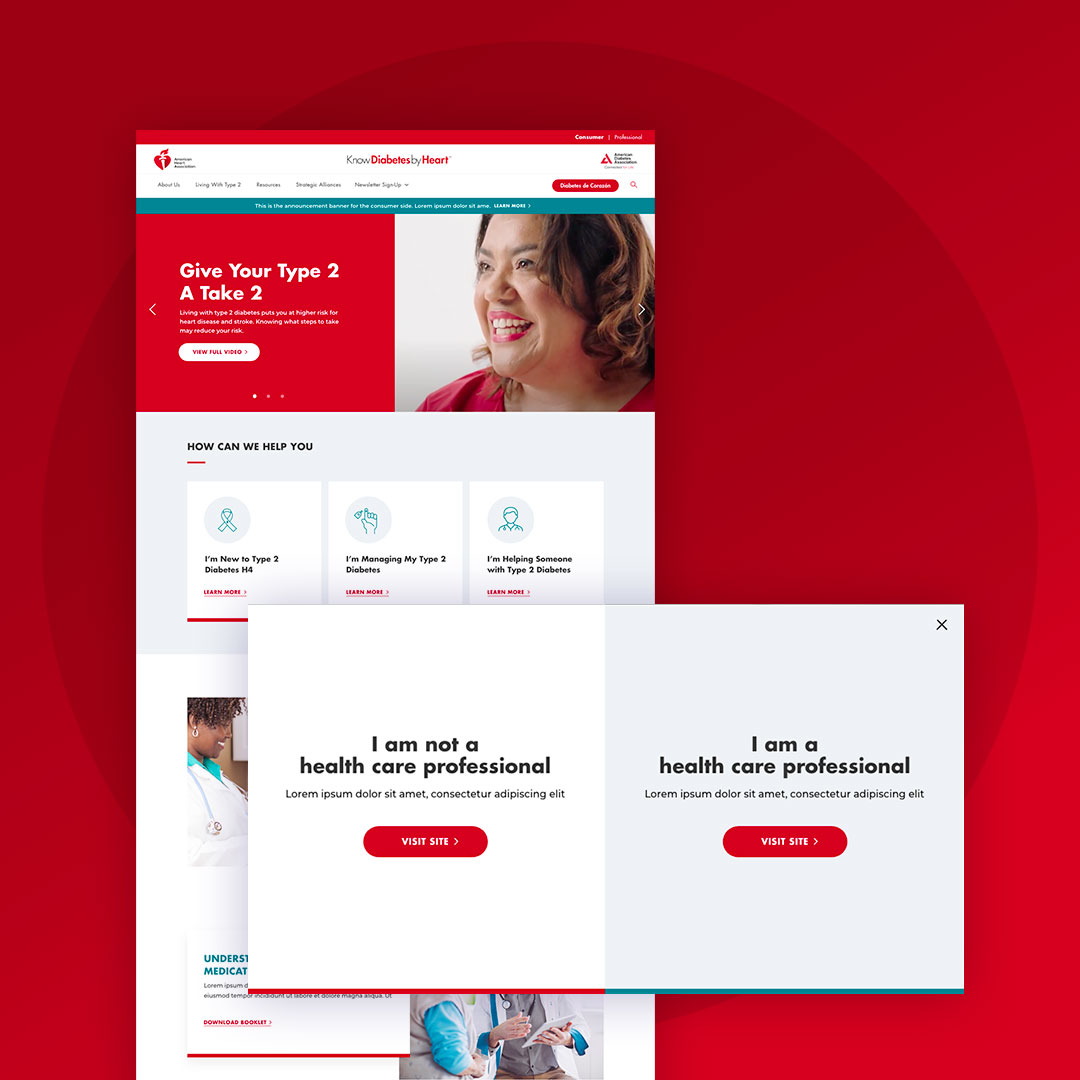DIYAI
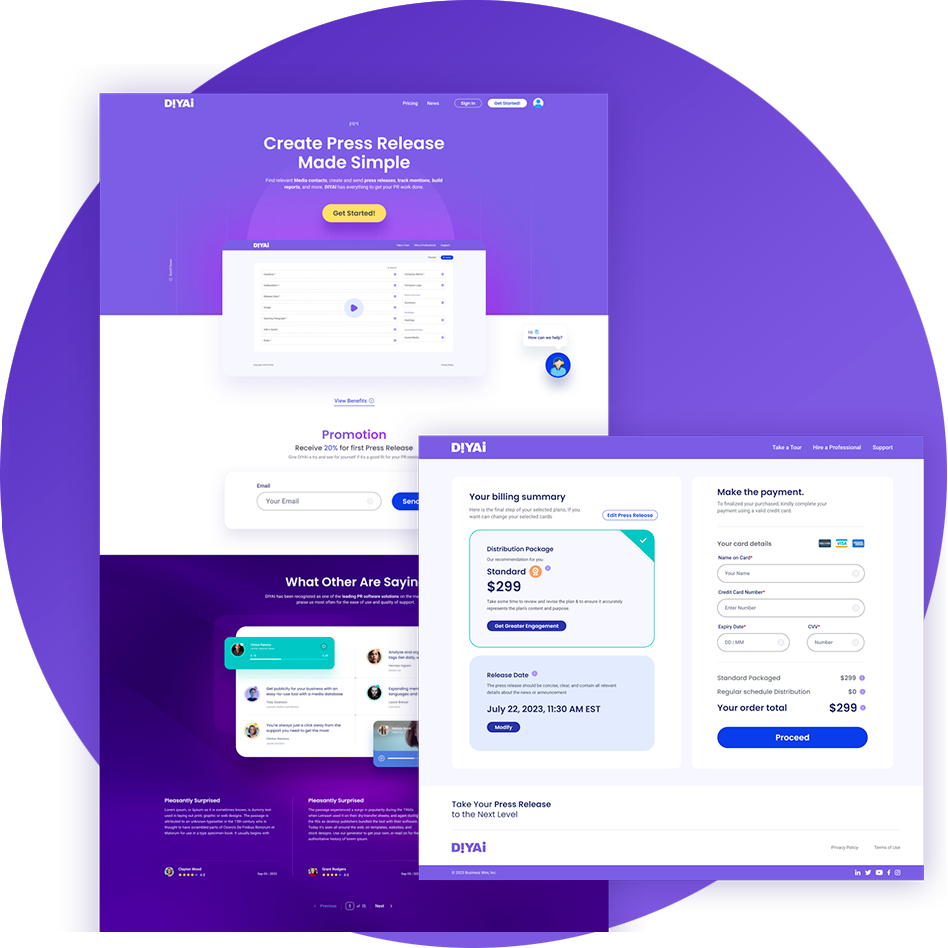
Project Overview
DIYAI is a self-serve, AI-powered platform designed to streamline press release creation for small to medium-sized businesses. As customer expectations shift toward self-service tools for creating and distributing press releases without relying on editors, DIYAI meets this demand by enabling users to efficiently generate high-quality content. The platform leverages advanced features such as AI-driven content extraction, moderation, recommendations, and sentiment analysis, delivering an affordable, scalable solution while maintaining professional standards through machine learning-backed quality control. This ensures Business Wire stays competitive and relevant in a rapidly evolving market.
Business Case Through Reseach
Market Opportunity
Market research indicates a significant revenue opportunity in the SMB sector, where over 30% of small businesses need affordable press release solutions. DIYAI is positioned to capture a notable share of this market within the first few years, offering a scalable, AI-powered self-serve platform.
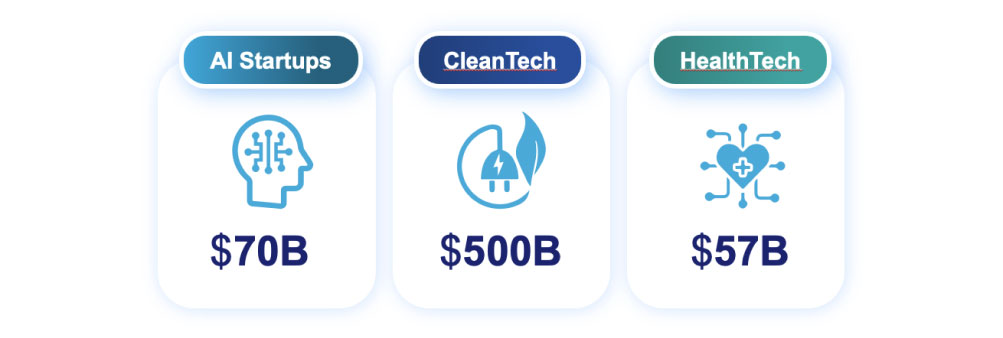
Market Segment
Market segmentation was performed to identify which user groups had the highest potential value and unique needs, allowing the product and UX design to focus on features, workflows, and AI-driven solutions that would maximize adoption, engagement, and business impact.

User Flow Diagram
The User Flow Diagram was created to align stakeholders on the end-to-end experience and pinpoint where AI would be applied—covering content extraction, moderation, recommendations, and vetting. This ensured clarity on how AI enhanced the workflow while keeping the product vision and technical implementation consistent across teams.

Interactive Prototype
An interactive prototype served as a “concept car” to quickly demonstrate the vision and secure leadership buy-in. Speed was critical in this effort—the prototype was built rapidly to showcase core key features in action, giving stakeholders a tangible view of the user experience. This approach not only validated the concept but also created early alignment across teams, accelerating momentum toward MVP development.
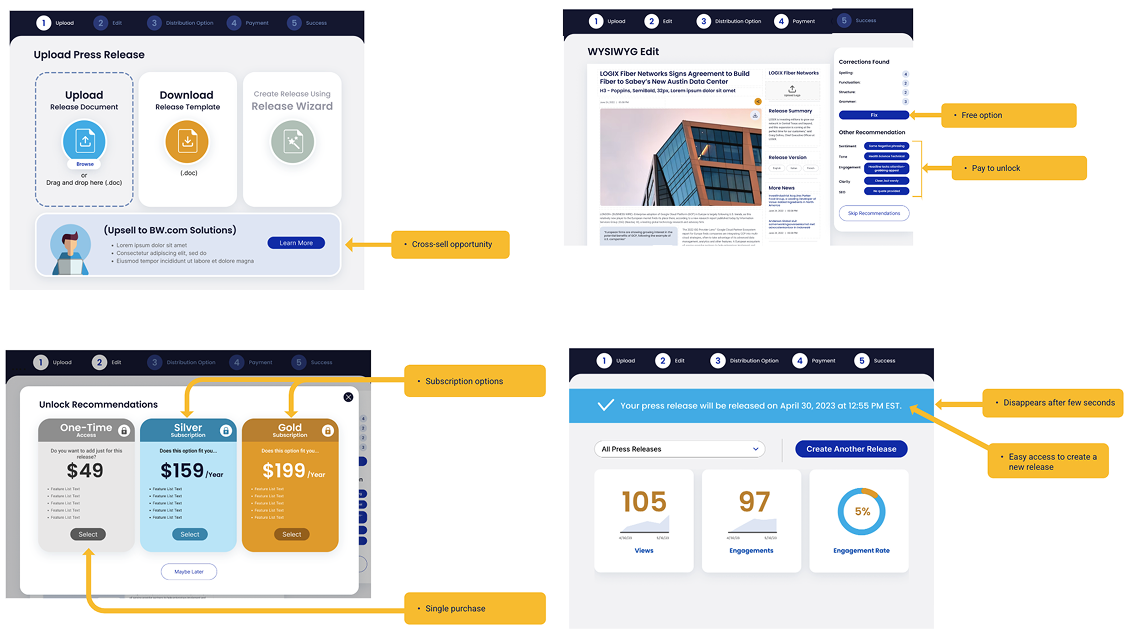
User Flow Diagram
The User Flow Diagram was created to align stakeholders on the end-to-end experience and pinpoint where AI would be applied—covering content extraction, moderation, recommendations, and vetting. This ensured clarity on how AI enhanced the workflow while keeping the product vision and technical implementation consistent across teams.

Wireframes
Wireframes were created to secure stakeholder buy-in and establish a shared understanding of what the team was building. They served as a clear, low-fidelity blueprint of the platform’s structure and functionality, enabling alignment before advancing to higher-fidelity design and development.
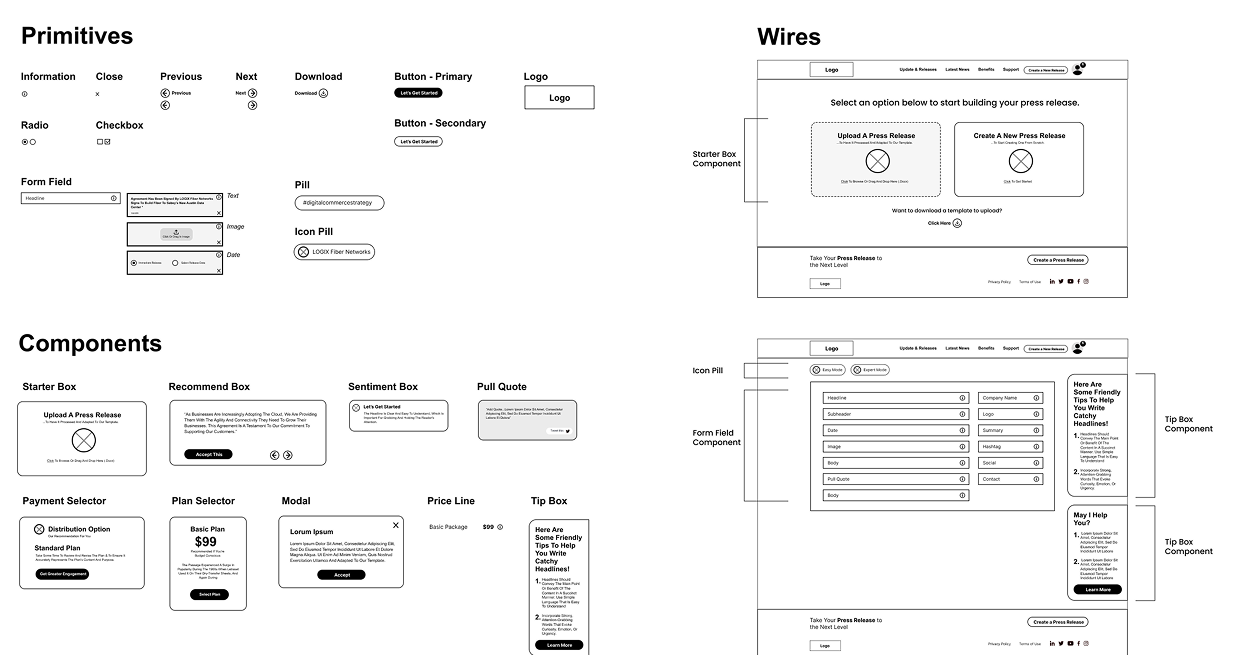
Hi-Fi Designs
The User Flow Diagram was created to align stakeholders on the end-to-end experience and pinpoint where AI would be applied—covering content extraction, moderation, recommendations, and vetting. This ensured clarity on how AI enhanced the workflow while keeping the product vision and technical implementation consistent across teams.
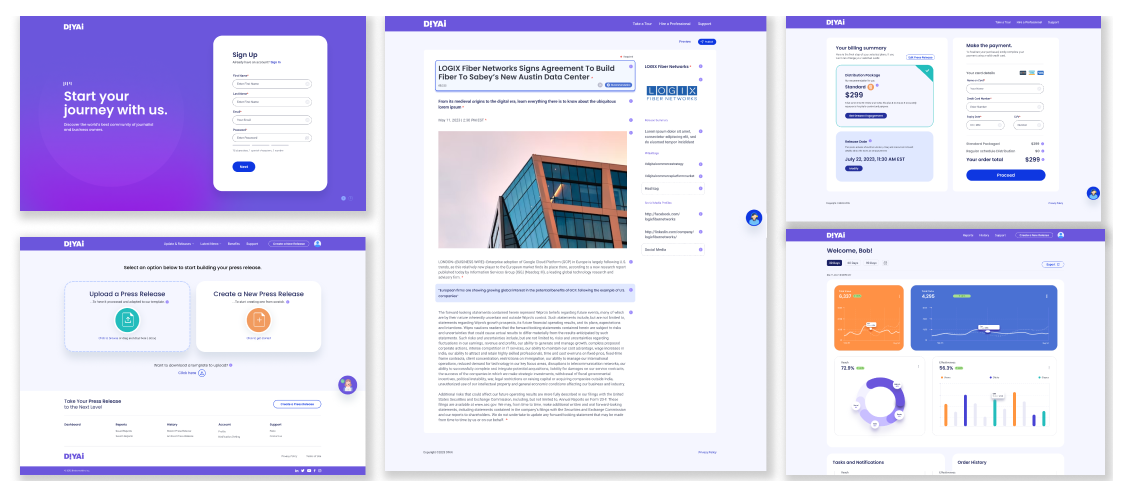
User Flow Diagram
The User Flow Diagram was created to align stakeholders on the end-to-end experience and pinpoint where AI would be applied—covering content extraction, moderation, recommendations, and vetting. This ensured clarity on how AI enhanced the workflow while keeping the product vision and technical implementation consistent across teams.

Hi-Fi Designs
Iterations Through Research
Iterative design was important to quickly refine concepts based on feedback and ensure the solution evolved toward user and business needs.
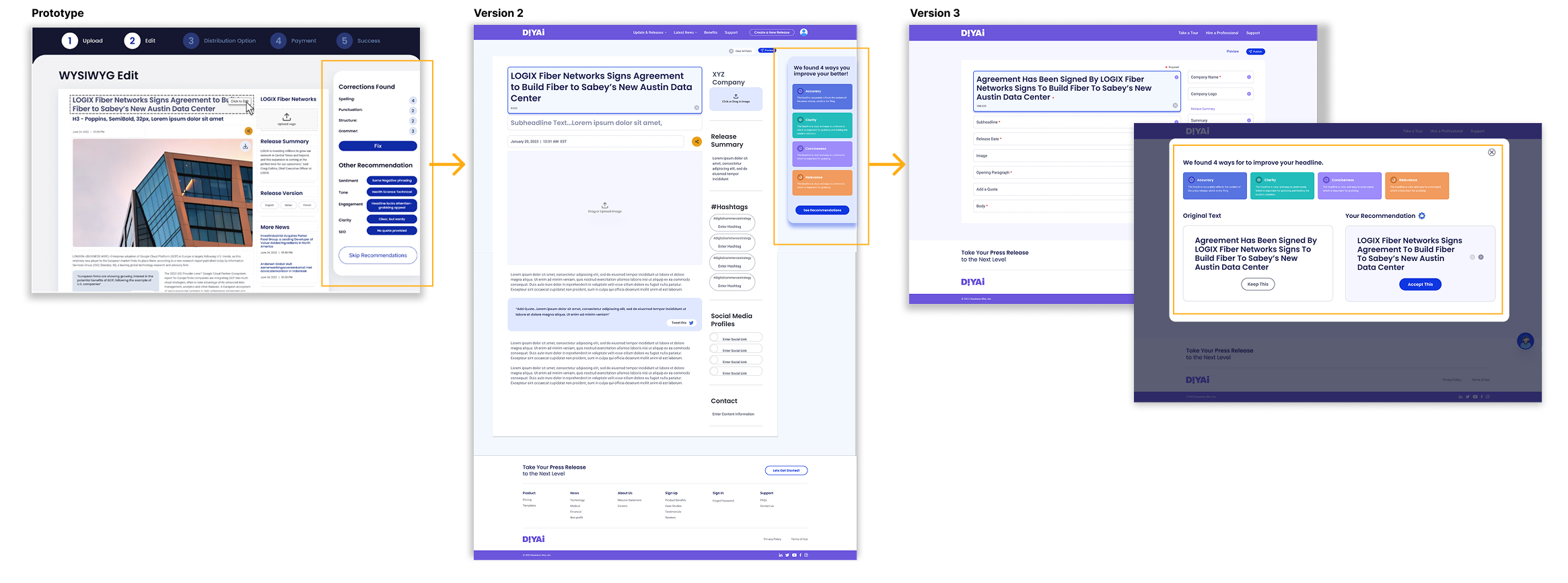
Design Preference Testing
Design preference testing was important to validate visual direction early and align stakeholders on the look and feel before full implementation.

Final Designs
The final design delivered a polished, intuitive experience with AI features seamlessly integrated, providing a clear blueprint for development and ensuring consistency across the product.

Results & Outcome
The initative secured leadership buy-in and demonstrated the viability of a self-serve, AI-powered platform in a shifting market. Projections showed DIYAI could generate $9.4M in revenue over five years by capturing demand from small to medium-sized businesses seeking affordable press release solutions. Beyond revenue potential, the work established a clear blueprint for development, aligned stakeholders around the product vision, and validated how AI integration—spanning content extraction, moderation, recommendations, sentiment analysis, and credibility vetting—could strengthen both usability and market competitiveness.
Summary
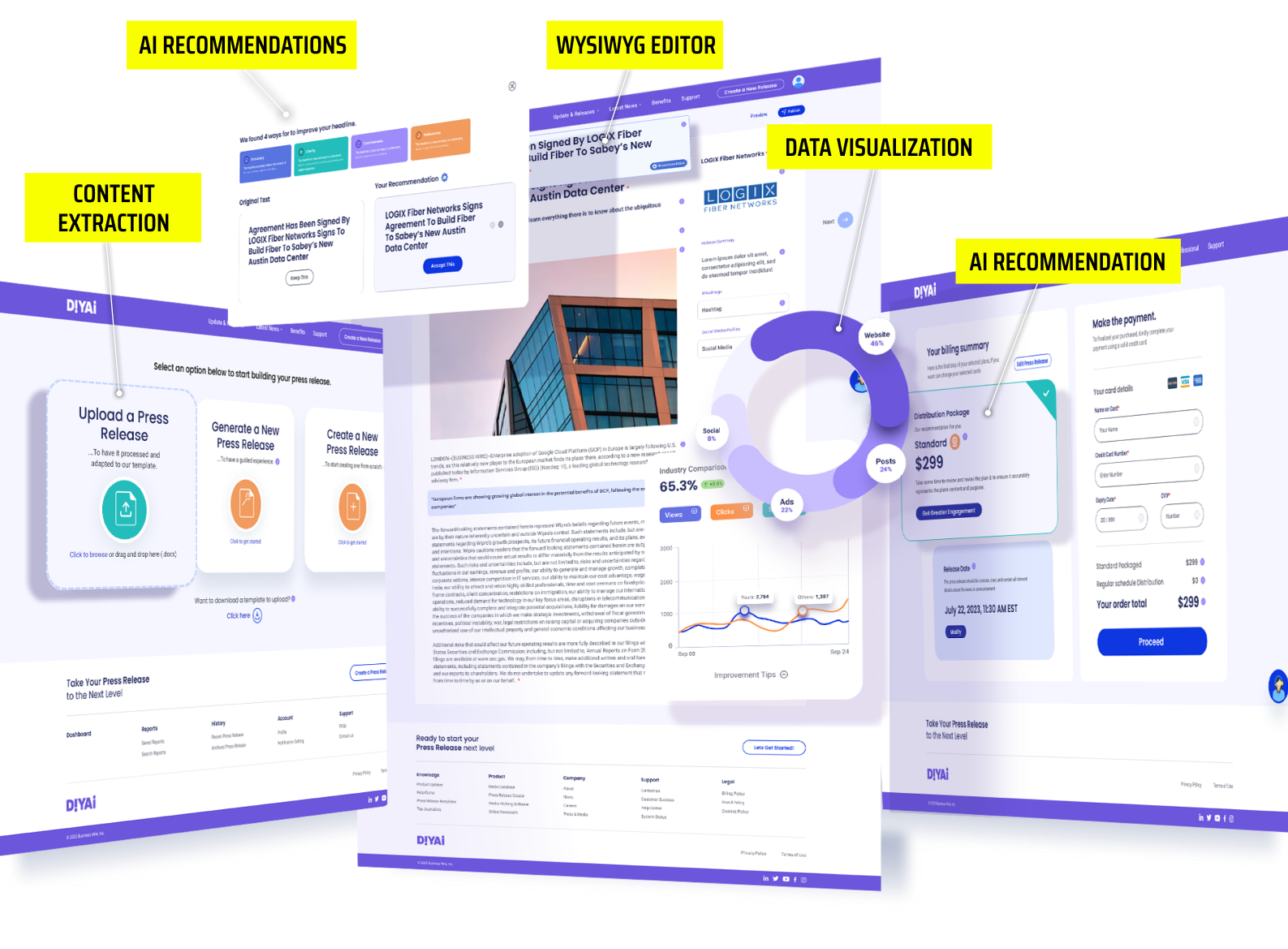
Agency and In-House Experience
Below Are Some Examples

Boost Mobile
Led design and research to uncover insights and shape a UX strategy, delivering iterative improvements that created seamless, scalable digital experiences.

BM Loyalty Program
Revamped a points-based loyalty program with early and long-term rewards, reducing churn and boosting long-term engagement.
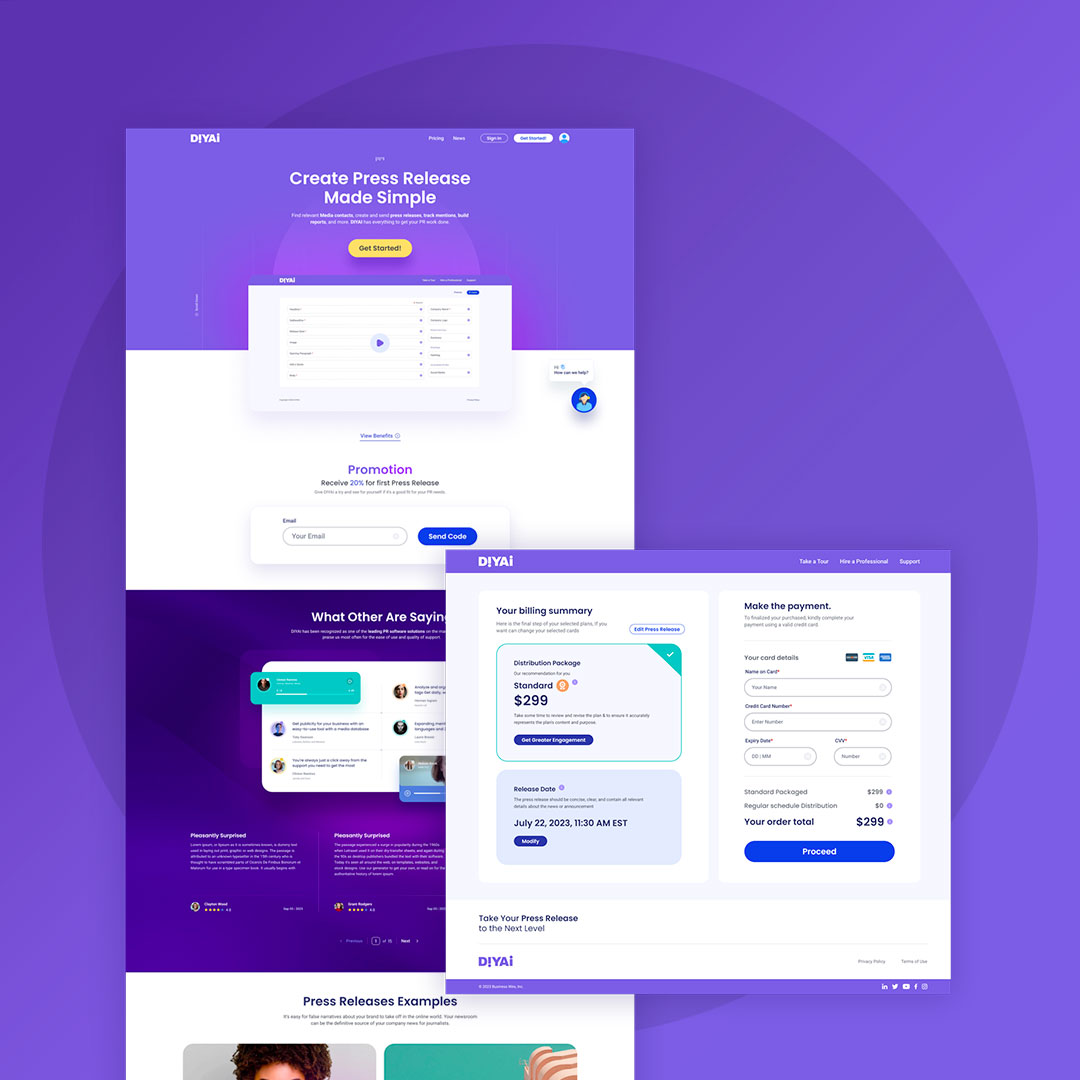
DIYAI
Designed a self-serve AI product with content automation, predictive customer and content vetting, and an intuitive WYSIWYG interface, enabling expansion into new markets.

Chick-Fil-A
Conducted UX evaluation and designed solutions to enhance the order creation experience on the Chick-fil-A iOS app.

Robust Technologies
Designed a custom gated website with strategic user roles and share capabilities to drive lead generation.
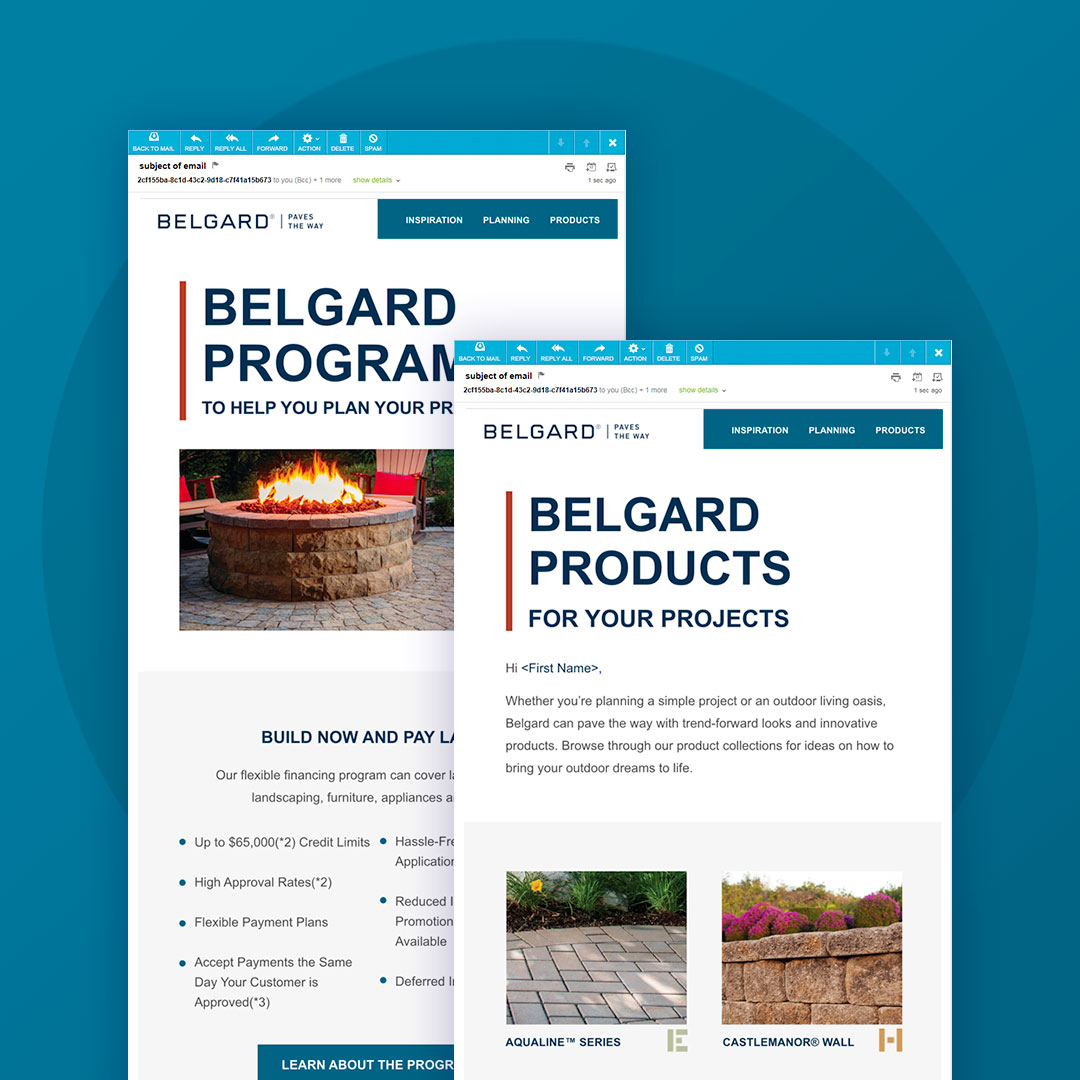
Belgard
Executed comprehensive digital marketing through an omnichannel approach, including website, SEO, blogs, social media, digital ads, email, and microsites.

BW Mobile App
Spearheaded the design of a new mobile app with real-time collaboration, streamlined workflows, and integrated biometrics, MFA, messaging, notifications, and customizable features.
